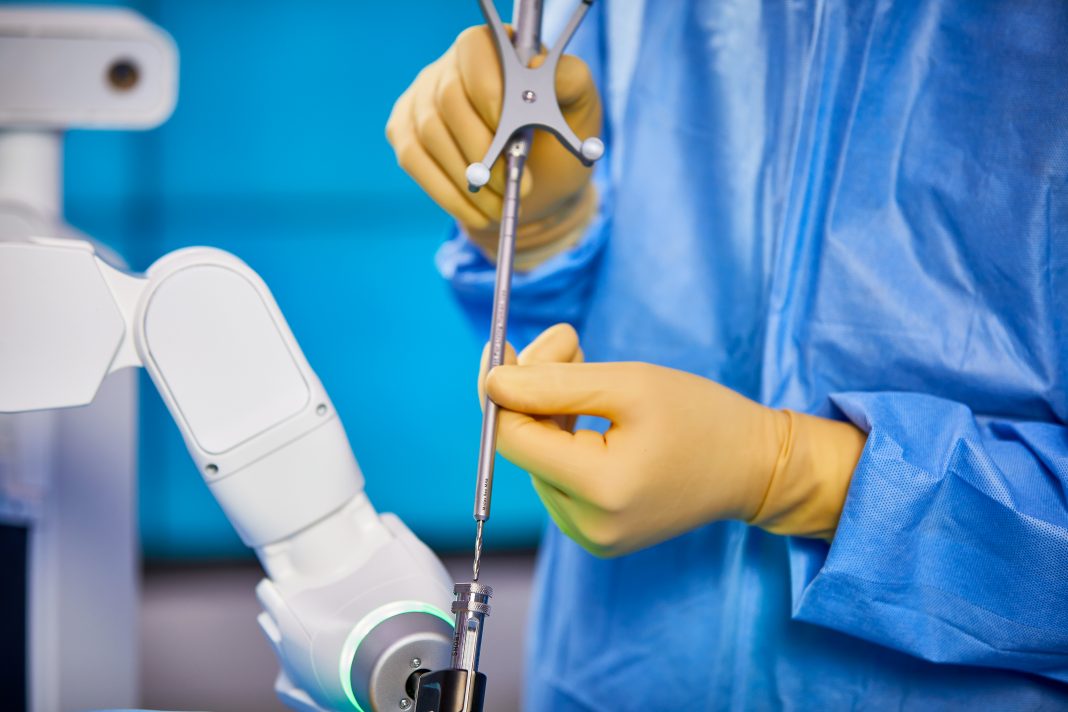February 16, 2021
Leading spine surgeons across the U.S. have successfully performed minimally invasive spinal procedures utilizing the newly cleared navigated disc prep, interbodies and Midas Rex high-speed drills with the Mazor Robotic Guidance System.
Medtronic notes these recent surgeries mark the next step in the transformation of spine surgery as a result of the increased precision and minimally invasive technique.
These cases demonstrated the improved disc-prep access and interbody navigation, precise drilling, and predictable planning that surgeons expect from the Mazor Robotic Guidance System.
- Dr. Gregory Poulter of OrthoIndy: Performed his first case on a 50-year-old male, a general manager at a construction company who presented with a pinched nerve in his lower back and severe leg pain. Dr. Poulter was able to conduct an OLIF360sm Single Position Surgery and discharge the patient the following day.
- Dr. Sharad Rajpal of Boulder Neurosurgical & Spine Associates: Conducted his first surgery at Centura-Avista Adventist Hospital using the integrated technology on an 83-year-old male, retired atmospheric physicist suffering from back and severe progressive leg pain and weakness that prevented him from walking. Dr. Rajpal performed an L2/3 decompression fusion and TLIF (Transforaminal Lumbar Interbody Fusion) on the patient, who has been discharged from the hospital and is home recovering with minimal pain and improved functionally.
- Dr. Eiman Shafa of Twin Cities Spine Center: Completed his first minimally invasive TLIF with bilateral instrumentation using expandable interbody technology on a 36-year-old male, boiler operator/maintenance technician with back and severe left lower extremity pain and progressive weakness. The patient was observed overnight and discharged the morning after his surgery. The morning post-surgery, the patient’s radicular leg pain and motor examination had returned to normal.
“Robotic assistance has fundamentally changed how we as spinal surgeons operate,” said Dr. Poulter. “I believe in the benefits of robotics such that I would strongly recommend it to all of my friends or family if they are in need of a lumbar spine procedure, as I see this as potentially life-changing.”
Despite elective surgery shutdowns due to the COVID-19 pandemic, many spinal procedures have continued, deemed essential due to the severity of the patient’s disability.
“I believe this technology allows surgeons to perform their spinal procedures even better through more concise planning and execution in the operating room,” said Dr. Rajpal. “One additional advantage is the versatility of the system. Surgeons can easily integrate the Mazor Robotic Guidance System into their current workflows – whether it’s using a pre-operative planning CT with intraoperative fluoroscopy or using an O-arm™ for scanning and planning altogether in the operating room. The newest software update and instrumentation sets have also significantly improved the workflow, providing a more intuitive interface for surgeons during the planning phase, to more streamlined steps when executing the surgical plan.”
“We want to congratulate each of these surgeons – and their patients – on successful procedures and recoveries,” said Linnea Burman, vice president and general manager, Enabling Technologies: Cranial & Spinal Technologies, which is reported as part of the Restorative Therapies Group at Medtronic. “We continuously strive to improve the robotic surgery field, and hearing about these great success stories and how these patients’ lives have been affected gives our team more motivation to achieve the next level of advancement.”
